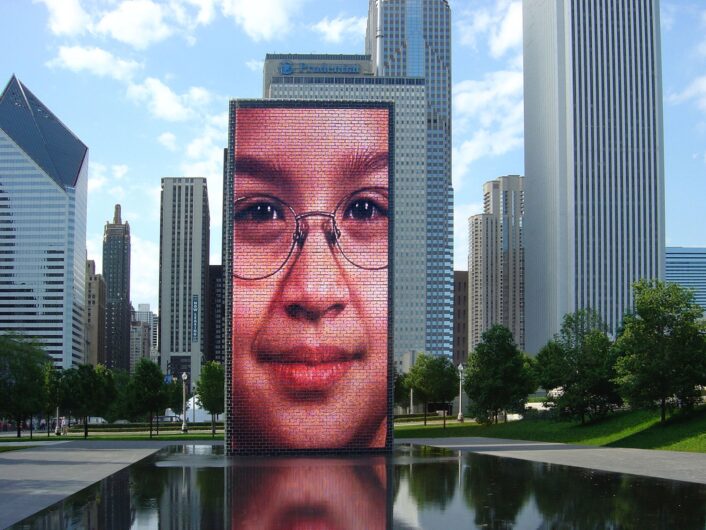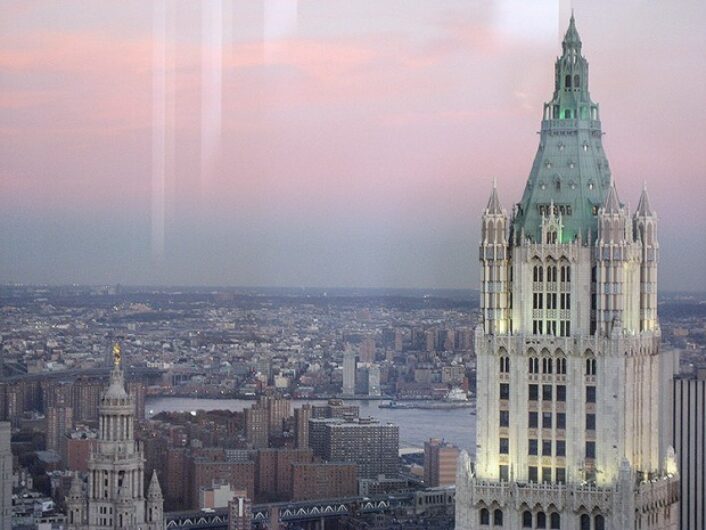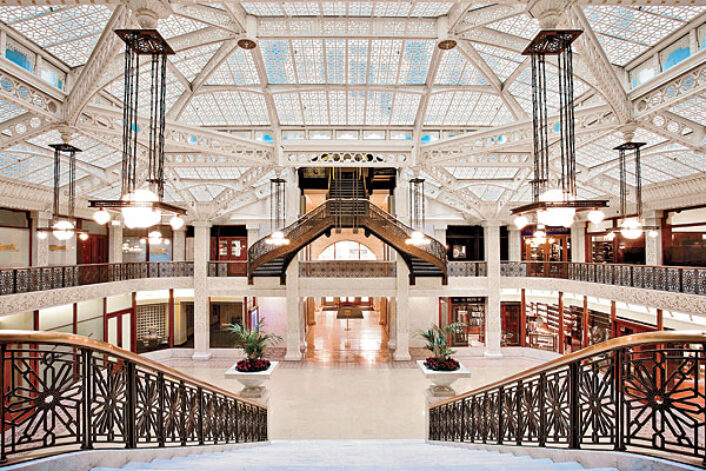Architecture
Happy 100th birthday Wrigley Building!
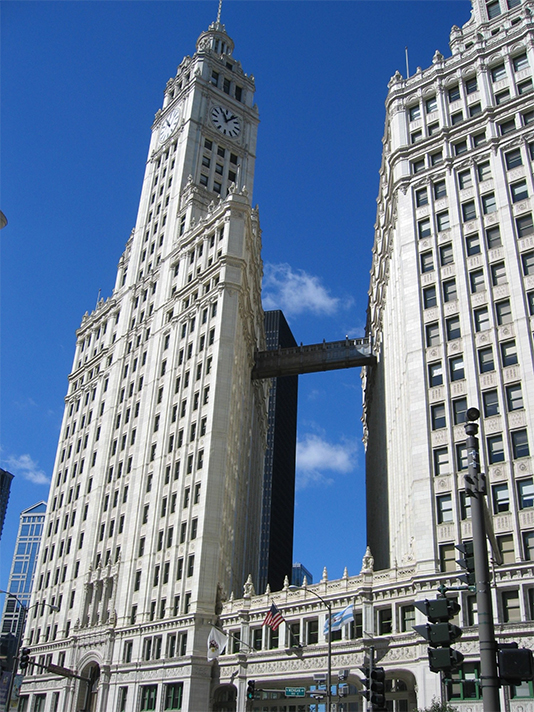
There used to be a cheese factory behind where the building stands; and across the street was a soap factory.
Image courtesy of: Chicago Architecture
The Wrigley Building is an iconic Chicago landmark, last year it turned 100 years old. It was William Wrigley Jr., the chewing gum magnate, that chose the location for his company’s headquarters. Interestingly, Wrigley selected an oddly- shaped lot just west of Michigan Avenue and north of the river. Previously, the specific location was a country road called Pine Street; it was lined with docks, factories, wares, and railroad tracks. The location was made possible thanks to the 1920 opening of the Michigan Avenue Bridge (now DuSable Bridge).
The building was designed by Graham, Anderson, Proust and White as part of the City Beautiful movement. The first skyscraper north of the river, its awe-inspiring style was inspired by Daniel Burnham’s architecture which was popularized by “White City” from Chicago’s 1893 World’s Fair.
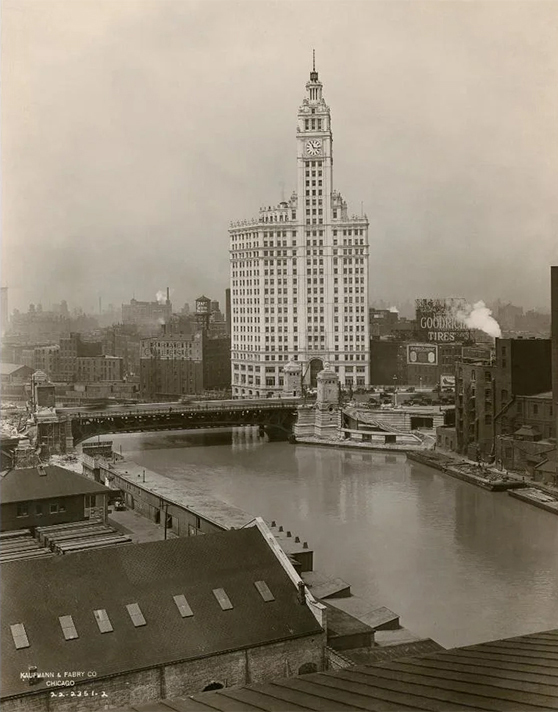
An original photograph courtesy of the Chicago History Museum.
Image courtesy of: WTTW News
Specifically, Charles Beersman designed the Wrigley Building for the chewing gum mogul . The architect designed a south and north tower. The south tower is taller and has a gigantic clock with faces in each direction. Enormous in size, each clock face is over 19 feet in diameter.
The second tower was commissioned three years after the south tower was completed. Once the entire project was deemed finished, an observatory in the clock tower opened to visitors. Admission was 5 cents; it also included a piece of Wrigley chewing gum… an ingenious marketing ploy!
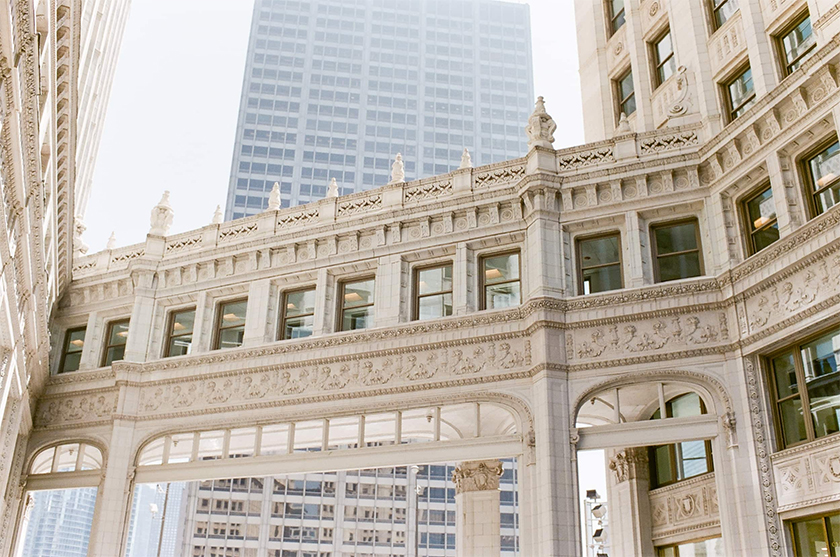
The tiles must be regularly hand-washed in order to maintain their majestic quality.
Image courtesy of: Tamara Gruner Photography
Wrigley never forgot his visit to the Columbia Exposition in 1893; specifically, he remained enamored with the famed White City presentation and the fair’s nighttime light displays. Working with Beersman, Wrigley wanted to ensure that those memories will forever live on in the building that was his namesake.
The building is made up of 250,000 terra cotta tiles in six different shades of white that became brighter with the building’s height. In addition, the facade is elegantly illuminated at night and classical ornamentation encrusts the skyscraper’s facade from the bottom to the top. Oddly, even the roof is ornately adorned. Each piece of terra cotta was designed and produced by the Northwestern Terra Cotta Company.
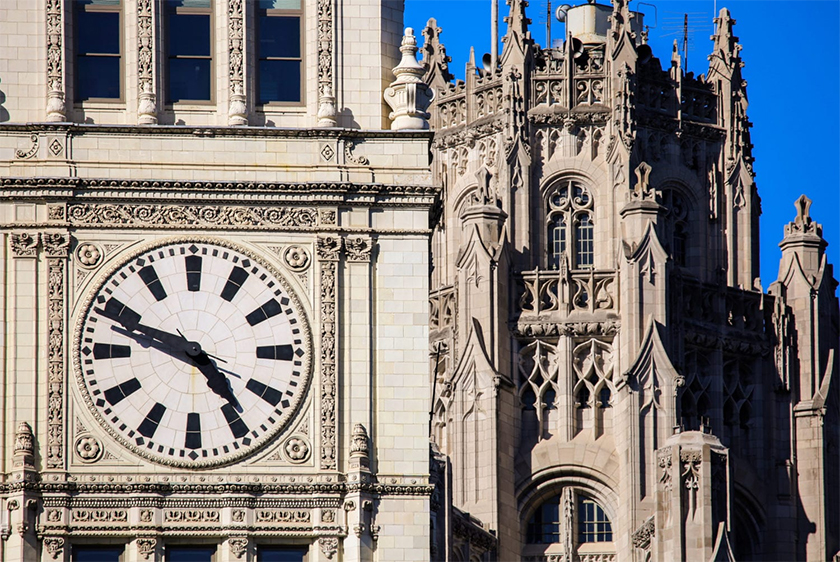
Adjusting the clock during Daylight Savings Time is a “team effort.” About the intensive effort, Bradley Borowiec, VP of the Wrigley Building said, “We have to do it the old-fashioned way with radios and making sure that we have somebody calling up and saying, ‘OK, it’s this time. What time do you see?’ And then we’ll move it.”
Image courtesy of: Urban Remains
The building’s style is categorized as French Renaissance Revival which is a blend of Gothic and Baroque elements. Much of the style’s inspiration comes from Italian architects; however the Wrigley Building was a copy of La Gerald, a bell tower that is part of the Spanish Seville Cathedral. Interestingly, when the cathedral was a mosque, the tower served as a minaret.
The building was a marvel of technological advances. It was the first skyscraper in Chicago to be fully air-conditioned; in addition, the clock is fully electric. Two stories worth of the building itself, Paul Durica, The Newberry Library’s director of exhibitions said about the clock, “That makes it keep almost near perfect time. It becomes an important way of Chicagoans being able to orient themselves.”
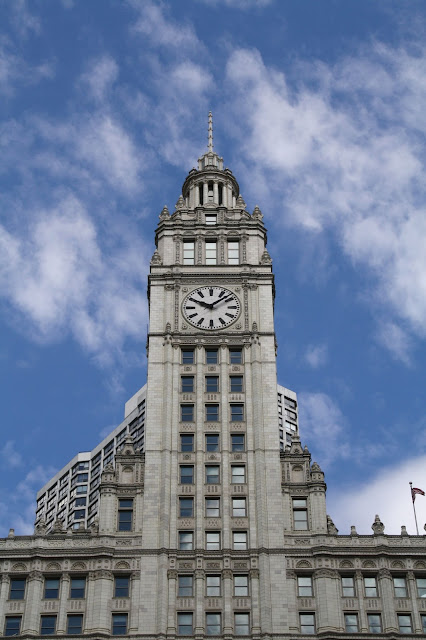
Chicago has its fair share of iconic buildings, among which is Wrigley Field, The Rookery, the Sears Tower, and the Museum of Science and Industry. The Wrigley Building however is atop of that esteemed list!
Image courtesy of: Salted Sugared Spiced
Well overdue, the building received Chicago Landmark status in 2012. We say overdue because it has become the building that many Chicagoans believe defines the Magnificent Mile. A “white knight” of a building, the Wrigley Building is one of Chicago’s most beloved symbols; and the city’s symbol of preeminence in both architecture and commerce.
About his masterpiece, Wrigley said (courtesy of Vamonde), “People thought when I began to put this up [The Wrigley Building] that I would plaster my name all over it in letters big enough to be seen miles away. If you look when you go out you will find it in small letters over the front door – but you may have to look twice.”
